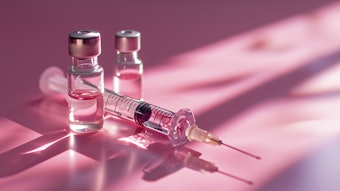Emil A. Tanghetti MD, expanded on his 2014 in vivo and ex vivo pilot study of the picosecond alexandrite laser to investigate how different energy settings affect the skin. He used a confocal microscope followed by biopsies to describe changes seen in the skin following in vivo treatment with a 755nm picosecond alexandrite laser with a fractional optic handpiece. Treatment was delivered at three different energy settings.
The histology revealed “unique intra-epidermal cavities” that varied in number, density and size based on the skin’s melanin index and the level of energy delivered. These microscopic epidermal injury zones, which are exfoliated over a three-week period, are most consistent with a “localized plasma formation in the epidermis initiated by the melanin absorption of the high energy picosecond light,” writes Dr. Tanghetti. He posits that the laser’s efficacy in reducing dyspigmentation and acne scars is the result of these microscopic injury zones, which stimulates epidermal repair mechanisms. The study was published in Lasers in Surgery and Medicine (September 2016).











